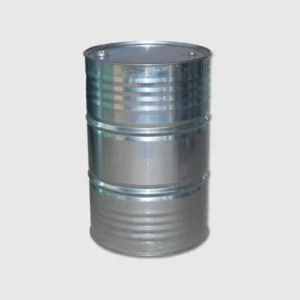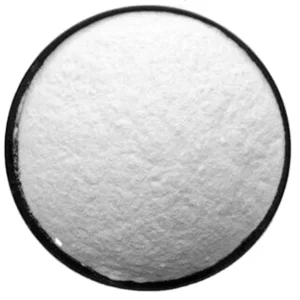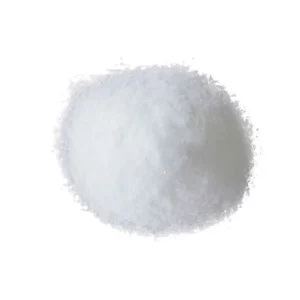Քիմիական միացությունները տարբեր ոլորտներում անթիվ ապրանքների և գործընթացների կառուցման բլոկներն են. Այս բլոգի գրառման մեջ, մենք կուսումնասիրենք երեք կարևոր միացություններ: Օքսոլան, Դիմեթիլացետամիդ, և Բութան-1-ոլ. Այս միացություններն ունեն յուրահատուկ հատկություններ և կիրառություն են գտնում տարբեր ոլորտներում, սկսած դեղագործական արտադրանքներից և լուծիչներից մինչև պոլիմերների արտադրություն և օրգանական սինթեզ. Հասկանալով դրանց առանձնահատկությունները, սինթեզի մեթոդներ, և հավելվածներ, մենք կարող ենք պատկերացում կազմել այս միացությունների հսկայական ներուժի և բազմակողմանիության մասին.
Օքսոլան: Բազմակողմանի ցիկլային եթեր
.webp)
Օքսոլան, հայտնի է նաև որպես տետրահիդրոֆուրան (THF), C4H8O մոլեկուլային բանաձեւով ցիկլային եթեր է. Այն անգույն հեղուկ է՝ հաճելի հոտով և գերազանց վճարունակ հատկություններով. Օքսոլանը ցուցադրում է ցածր մածուցիկություն և բարձր անկայունություն, դարձնելով այն արժեքավոր լուծիչ տարբեր օրգանական միացությունների համար, խեժեր, եւ պոլիմերներ. Այն լայնորեն կիրառվում է սոսինձների արտադրության մեջ, ծածկույթներ, և տպագրական թանաքներ. Օքսոլանը նաև կարևոր բաղադրիչ է դեղագործական արտադրանքի սինթեզում, քանի որ այն ծառայում է որպես ռեակցիայի միջավայր և լուծիչ ակտիվ դեղագործական բաղադրիչների համար (API-ներ). Օքսոլանի սինթեզը ներառում է բութան-1-ոլի ջրազրկում, արդյունքում ձևավորվում է ցիկլային եթեր՝ կիրառությունների լայն շրջանակով.
Դիմեթիլացետամիդ: Բազմակողմանի լուծիչ
Դիմեթիլացետամիդ (Դմ) կողմից Չինաստան Դիմեթիլացետամիդ մատակարար, C4H9NO մոլեկուլային բանաձևով բազմակողմանի լուծիչ է. Այն անգույն հեղուկ է՝ բարձր եռման կետով և գերազանց վճարունակությամբ ինչպես բևեռային, այնպես էլ ոչ բևեռային միացությունների համար։. DMAc-ն ունի բարձր ջերմային կայունություն, ցածր թունավորություն, և ցածր գոլորշիների ճնշում, դարձնելով այն հարմար կիրառությունների լայն շրջանակի համար. Այն սովորաբար օգտագործվում է որպես լուծիչ սինթետիկ մանրաթելերի արտադրության մեջ, ինչպիսիք են պոլիակրիլոնիտրիլը, և ֆիլմերի արտադրության մեջ, ծածկույթներ, և դեղագործական. DMAc-ը նաև կիրառություն է գտնում քիմիական արդյունաբերության մեջ՝ որպես օրգանական սինթեզի ռեակցիայի միջավայր, ներառյալ դեղագործական միջանկյալ նյութերի և հատուկ քիմիական նյութերի արտադրությունը. DMAc-ի սինթեզը ներառում է ացետամիդի և դիմեթիլ սուլֆատի կամ մեթիլացետատի միջև ռեակցիան:, որին հաջորդում են մաքրման գործընթացները.
Բութան-1-ոլ: Բազմակողմանի ալկոհոլ
Բութան-1-ոլ, հայտնի է նաև որպես n-butanol կամ n-butyl սպիրտ, չորս ածխածնային ուղիղ շղթայով սպիրտ է՝ C4H10O մոլեկուլային բանաձեւով. Այն անգույն հեղուկ է՝ բնորոշ ալկոհոլային հոտով. Բութան-1-ոլ կողմից Չինաստան Butan-1-ol մատակարարներ, ցուցադրում է մի շարք հատկություններ, ներառյալ չափավոր բևեռականությունը և ցածր անկայունությունը. Այն կիրառություն է գտնում որպես լուծիչ, միջանկյալ, և հումքը տարբեր ճյուղերում. Բութան-1-ոլը սովորաբար օգտագործվում է որպես ներկերի լուծիչ, ծածկույթներ, սոսինձներ, և խեժեր՝ շնորհիվ օրգանական միացությունների լայն տեսականի լուծարելու ունակության. Այն նաև ծառայում է որպես նախադրյալ պլաստիկացնող նյութերի սինթեզում, դեղագործություն, և համային տեսականի. Բութան-1-ոլի սինթեզը սովորաբար ներառում է բութանի կամ բուտիրալդեհիդի վերականգնում ջրածնի գազի կամ նատրիումի բորոհիդրիդի միջոցով.
Ծրագրեր և արդյունաբերական նշանակություն
Օքսոլանից Չինաստան Oxolane արտադրող, Դիմեթիլացետամիդ, և Butan-1-ol-ը արդյունաբերական նշանակալի նշանակություն ունեն իրենց բազմակողմանի հատկությունների և կիրառությունների շնորհիվ. Օքսոլանը կարևոր լուծիչ է խեժերի արտադրության մեջ, պոլիմերներ, և դեղագործական, մինչդեռ դիմեթիլացետամիդը ծառայում է որպես կենսական լուծիչ սինթետիկ մանրաթելերի արտադրության մեջ, ֆիլմեր, և դեղագործական. Բութան-1-ոլը կիրառություն է գտնում որպես լուծիչ և միջանկյալ միջոց տարբեր ոլորտներում, նպաստում է ծածկույթների արտադրությանը, սոսինձներ, և համային տեսականի. Այս միացությունները կենսական դեր են խաղում դեղագործական սինթեզի մեջ, օրգանական ռեակցիաներ, և բազմաթիվ սպառողական ապրանքների ձևավորում, ընդգծելով դրանց լայնածավալ նշանակությունը արդյունաբերական գործընթացներում.
Անվտանգության նկատառումներ և շրջակա միջավայրի վրա ազդեցություն
Մինչդեռ Օքսոլանը, Դիմեթիլացետամիդ, և Բութան-1-ոլը արժեքավոր միացություններ են, Կարևոր է հաշվի առնել դրանց անվտանգությունը և շրջակա միջավայրի վրա ազդեցությունը. Այս միացությունների հետ պետք է զգույշ վարվել, քանի որ դրանք կարող են լինել դյուրավառ կամ թունավոր. Ճիշտ օդափոխություն, անձնական պաշտպանիչ սարքավորումներ, և այս քիմիական նյութերի հետ աշխատելիս կարևոր է անվտանգության ուղեցույցների պահպանումը. Լրացուցիչ, Շատ կարևոր է հետևել ոչնչացման պատշաճ արձանագրություններին` նվազագույնի հասցնելու դրանց ազդեցությունը շրջակա միջավայրի վրա. Կայուն պրակտիկա, ինչպիսիք են վերամշակումը և թափոնների կառավարումը, պետք է օգտագործվի՝ մեղմելու մարդու առողջության և շրջակա միջավայրի վրա հնարավոր բացասական հետևանքները.

.webp)



